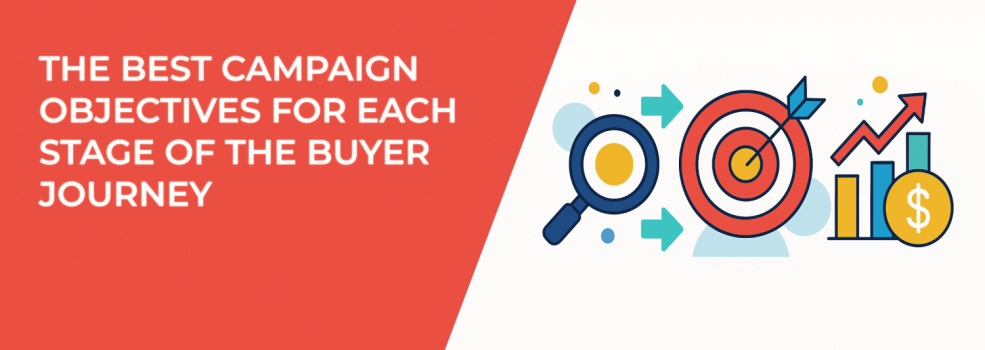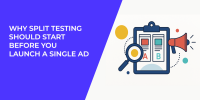Trying to run ads without aligning them to the buyer’s journey is like pitching a product to someone who just heard your name. You might get lucky, but chances are, you’ll get ignored.
If you want real results from your ad spend, you need to pick the right Meta campaign objective for each stage of the buyer journey. That means using different strategies for awareness, consideration, and conversion — not just launching ads and hoping for the best.
Why Campaign Objectives Matter
Campaign objectives are not just settings inside Ads Manager. They tell Meta’s algorithm exactly what you want to achieve. If you choose the wrong one, your ads might reach the wrong people or push for action too soon.
Meta gives you six main objective categories:
-
Awareness, to generate broad brand familiarity;
-
Traffic, to send users to your site, app, or content;
-
Engagement, to encourage interaction with your content;
-
Leads, to collect information from interested prospects;
-
App Promotion, to drive installs and usage;
-
Sales, to target users most likely to convert.
Each of these serves a different role in the customer journey. If you’re unsure which objective does what, start with this breakdown.
Awareness: Be Seen, Be Remembered
At the top of the funnel, your goal is to introduce your brand. The people you’re targeting don’t know who you are yet. They’re not ready to buy or click — they’re just getting familiar.
Use these objectives:
-
Awareness, to reach people likely to remember your brand later;
-
Video Views, to share a brand story or spark curiosity.
Use bold, simple creative. Short videos with strong visuals work well. If you're looking to speed up your workflow, check out these AI tools.
Run awareness ads when you are:
-
Launching a new brand, product, or feature;
-
Entering a new market or audience segment;
-
Building long-term visibility with low cost-per-thousand impressions.
Consideration: Build Interest and Intent
Once someone has seen your brand, the next step is engagement. They might have watched a video or visited your site. Now they’re curious, but they still need a reason to act.
Choose objectives that move them closer:
-
Traffic, to send them to a product page, blog, or lead magnet;
-
Engagement, to encourage likes, shares, or comments;
-
Leads, to collect emails with simple forms and offers;
-
Video Views, to qualify audiences for retargeting.
Use content that adds value:
-
Educational blog posts or FAQs;
-
Product demos or comparisons;
-
Social proof like testimonials or case studies.
Not sure how to define this audience? Follow this step-by-step guide.
This stage is ideal for building remarketing pools and identifying warmer leads. Keep forms short. Give users a compelling reason to opt in, like free tools, guides, or webinars.
Conversion: Drive Results That Matter
By this stage, your audience knows who you are. They’ve considered your offer and maybe even visited your pricing page. Now it’s time to act.
Use performance-driven objectives:
-
Sales, to optimize for purchases, sign-ups, or bookings;
-
Leads, with bottom-funnel offers like demos or consultations;
-
App Promotion, to drive installs and in-app activity.
Craft conversion-focused creative:
-
Include clear CTAs and urgency ("Ends Friday," "Only 3 Left");
-
Show real customer reviews or case studies;
-
Highlight guarantees or risk reducers.
If these campaigns don’t convert, your audience may not be ready. Review this guide to fix underperforming campaigns.
Retargeting: Use the Right Objective for the Action
Retargeting isn’t a buyer stage — it’s a targeting tactic. The message and objective need to reflect how familiar the user is with your brand.
Use different objectives depending on user behavior:
-
Retarget video viewers with Traffic or Leads;
-
Retarget product page visitors with Sales;
-
Retarget form opens without submission using short-form Leads.
Segment retargeting campaigns by intent signals, not just past activity. Someone who watched a full product demo may be closer to conversion than someone who liked a single post.
Want to improve targeting precision? Read Facebook Ad Targeting 101 for examples and tactics.
Summary: Match Objective to Stage
Here’s how to choose objectives by where your audience is in the buyer journey:
-
For Awareness: Use Awareness and Video Views to build familiarity and brand recall.
-
For Consideration: Use Traffic, Engagement, and Leads to deepen interest and nurture intent.
-
For Conversion: Use Sales and App Promotion to drive real results and optimize spend.
You can also split-test creative formats for each stage, but keep your focus on the user's mindset and readiness.
Final Tip: Strategy Beats Speed
Before you launch your next campaign, take a moment. Ask yourself where your audience is in their journey. Then pick the campaign objective that moves them forward.
If you need a framework to build on, start here: How to Set Up Performance-Driven Facebook Campaign Objectives.

